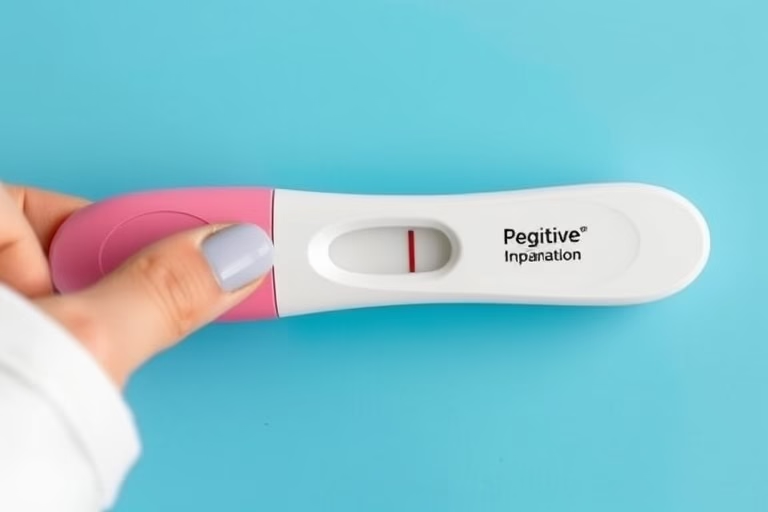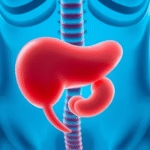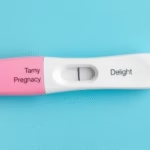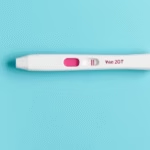Understanding Positive Pregnancy Test with Implantation Bleeding
When a woman receives a positive pregnancy test, it can be a moment filled with hope and excitement. However, some may experience implantation bleeding, which can be confusing and raise questions. Implantation bleeding occurs when a fertilized egg attaches itself to the uterine lining, leading to light spotting or bleeding. This event typically happens about 6 to 12 days after conception, which can coincide with a period when a pregnancy test could yield a positive result.
This bleeding is usually much lighter than a regular menstrual period and may be accompanied by other early signs of pregnancy, like mild cramping. Understanding this process helps to clarify what to expect when it happens and assures many anxious women that their body is functioning as it should in early pregnancy.
What is Implantation Bleeding?
Implantation bleeding is a significant phenomenon in early pregnancy, marking the point where a newly fertilized egg implants itself into the uterus. This union usually takes place about a week after fertilization. The process of the embryo embedding itself into the soft lining of the uterus can cause mild symptoms, including spotting.
This process is completely natural and occurs in about one-third of pregnant women. It’s important to recognize that implantation bleeding is not a cause for alarm. Unlike menstrual bleeding, it is typically light in flow and may vary in color from pink to brownish. Some women may mistake this for an early period, but knowing the timing and characteristics can help distinguish between the two.
Additionally, the duration of implantation bleeding is usually brief, lasting from a few hours to a few days. Being informed about this aspect of conception can make the journey of pregnancy less uncertain for many women.
When Does It Happen?
Implantation bleeding generally happens between 6 to 12 days after conception, coinciding with the time a woman’s period is expected. This timing is crucial because it often leads women to question whether they are experiencing symptoms of pregnancy or merely getting ready for their menstrual cycle.
In a typical 28-day menstrual cycle, ovulation occurs around day 14, with fertilization often occurring within the next few days. The fertilized egg travels to the uterus, where it will implant. If a woman takes a pregnancy test near this time and receives a positive result, understanding the timing of implantation bleeding can provide clarity.
Many factors can affect the exact timing of these events, making it essential for women to keep track of their cycles and recognize any variations which might indicate implantation rather than the onset of a period.
How to Identify Implantation Bleeding?
Distinguishing implantation bleeding from a regular menstrual period is an important skill for women who are trying to conceive. There are a few key characteristics to identify:
Being aware of these differences can help in identifying whether one is experiencing early signs of pregnancy or is just about to start their menstrual cycle.
Other Early Pregnancy Signs
Aside from implantation bleeding, there are various other early signs of pregnancy that women may observe. Understanding these signs can help in recognizing pregnancy earlier:
Not every woman will experience all these signs, and some might experience them more severely than others. Awareness of these symptoms can aid women in identifying a possible pregnancy.
What If You Experience Heavy Bleeding?
If heavy bleeding occurs after receiving a positive pregnancy result, it is crucial to seek medical advice. Heavy bleeding could indicate a miscarriage or other complications that need immediate attention.
Some signs to watch for include:
Any such symptoms require prompt medical consultation to determine what is happening and the best course of action going forward. Early intervention can be key in ensuring the health of both the mother and any developing pregnancy.
Consulting Your Doctor
If there is any uncertainty regarding pregnancy signs or if complicated symptoms arise, visiting a healthcare provider can offer reassurance and guidance. Doctors can provide blood tests that can confirm pregnancy earlier than home tests, alongside educating women about what to expect in early pregnancy.
Additionally, engaging in prenatal care early can provide valuable insights into maintaining a healthy pregnancy. Regular check-ups are pivotal for monitoring both the mother and baby’s health during the entire pregnancy journey.
Ultimately, consulting with a healthcare professional should be prioritized if anything seems amiss or if there are doubts about what is taking place in one’s body.
Final Thoughts
Understanding the nature of a positive pregnancy test alongside implantation bleeding offers clarity during what can be an anxious time for many women. Recognizing the signs, symptoms, and timing associated with implantation can help differentiate between early pregnancy and menstrual cycles. Being aware can prepare women for the challenges that may lie ahead during pregnancy.
Since each woman’s body can respond differently to pregnancy, some symptoms might persist while others might not be apparent at all. Keeping track of the cycle, taking notice of any variations, and maintaining regular communication with healthcare providers enhances the overall experience.
In conclusion, while implantation bleeding may be a common occurrence, attentiveness and understanding can make the process of early pregnancy more manageable. Along with consulting doctors whenever necessary, being educated about the signs of pregnancy and where they lie within the menstrual cycle fosters a better connection with one’s body.
Frequently Asked Questions
1. What does implantation bleeding look like?
Implantation bleeding is typically light pink or brown and is much lighter than a menstrual period. It may appear as spotting or a few drops on toilet paper.
2. How can I tell if it’s implantation bleeding or my period?
Timing, light flow, and color can help distinguish them. Implantation bleeding occurs a few days before a missed period and is light and brief.
3. Is implantation bleeding a sign of pregnancy?
Yes, it can be an early sign of pregnancy, occurring when a fertilized egg embeds itself into the uterine lining.
4. Can I take a pregnancy test during implantation bleeding?
Yes, many women experience a positive test during this time, but testing a few days after the expected period provides more accurate results.
5. What should I do if I have heavy bleeding after a positive pregnancy test?
Seek medical attention immediately, as heavy bleeding could indicate a miscarriage or other complications.
Further Reading
What Type of Psychotherapy Is Best for Anxiety?







